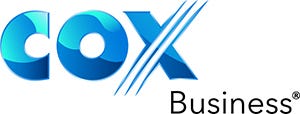How to Build an SMB Marketing Machine
Innovative Business Solutions' VP of sales and strategic partnerships shares tips for effectively growing your SMB marketing machine.
February 1, 2022

In this installment of our SMB Marketing blog series, I had the pleasure of talking with Shane Fugazy, vice president of sales and strategic partnerships at Innovative Business Solutions. When Shane participated in our Partner Marketing Roundtable, he really impressed us with his organization’s marketing acumen, and he agreed to share more of his insights around building a marketing machine within an SMB.
Muscarella: Tell us a little bit about your marketing team. Do you have a dedicated staff?
Fugazy: We originally started with an outsourced marketing group but today have a great internal marketing team of two—our marketing manager and a marketing associate who helps us a lot with our content creation and graphic design across our website and marketing materials. We made the move when we realized that we have the most success handling the daily execution of marketing tasks—like newsletter and content creation—internally. And some of our best ideas come from Jed Kenzy, one of our managing partners and a founder.
For other partners who read this and are thinking about outsourced versus in-house marketing teams, where do you think that tipping point was regarding when it was time to switch?
I’d say it comes down to growth and the size of the organization. We’ve added nine new people since the beginning of the pandemic. In years past we didn’t have enough work to hire a dedicated resource. Quite frankly, we’ve lost a few resources because of this in the past. We would hire someone and just not have enough work for them. Nobody wants to be bored at work.
For partners who are smaller or just getting started in marketing, I would highly recommend using an agency. An agency brings in such a wealth of knowledge, ideas and expertise, including content creation, design, creative writing, SEO, and analytics on SEM—really a full strategic vision. Specifically, an agency that knows the indirect channel and understands your business is best. For companies getting started in marketing, the cost is reasonable. It’s usually less than a full-time employee, and you get a full staff of experts in their fields rather than just one employee. When the marketing effort gets to be about half to three-quarters of a full-time employee, you should really consider bringing the department in-house.
On the roundtable call, you said that you were using HubSpot. What made you move to a full marketing automation tool?
Much like other partners who are getting started, we first used Constant Contact or Mailchimp—simple email automation. We dabbled with other tools as well—$25 per month for one, $100 per month for another—but none gave us everything we wanted.
We had been looking for something to integrate our technology stacks. As the company grew, we found ourselves positioned like many other companies using disparate systems. And, as we got bigger, it became very challenging. Then we looked at our own innovation side in the cable industry with CableFinder.net, where we are also consolidating multiple systems for the cable companies.
The real benefit to us is that HubSpot collapses our technology stacks. We can take our CRM and integrate it into our commissioning platform, our website and CableFinder.net.
We can also now tell where our communications are effective. Anything that you can open, click, read or click through, we can track all the way down to which spiffs they’re clicking on so that we can target market to them afterward.
For example, we can send an invitation to a webinar to learn more about a specific carrier, such as Cox Business. We recently did one promoting a webinar “masterclass” training session on RapidScale. We brought in RapidScale experts to talk to our community about what RapidScale does, what technologies it has, and how to sell and support it. And with HubSpot, we can directly correlate webinar results with quotes, leads, and sales orders.
It’s really all about making good decisions around where you should spend your dollars.
How have these tools helped your sales and marketing strategies?
They have given us structure and automation. We can plan. So rather than every month simply sending out a newsletter and forwarding the spiffs as they come out, it enables us to consolidate click information and link back to landing pages. That allows us to put a strategy and plan into place rather than simply forwarding emails. Our marketing calendar is now a hub of activity (HubSpot) and sales success rather than just a schedule of actions. We can track actual engagement rather than just open rates. This allows us to gauge our partners’ interests and tailor information that they find relevant to their business. Click on Page 2 to continue reading…
That’s impressive. How much do you rely on social media versus email versus print?
Social is not only for our current ecosystem; we also look at social as an acquisition platform because we’ll post something interesting—show a 20- or 30-second clip on video—and people will engage from that.
Social—LinkedIn, in particular—also has a brand recognition and relevancy component for us. We’re looking to really increase our social presence to make sure that we’re far more relevant to what agents are looking for, rather than just blasting information.
Email is a way to stay in front of our current partners, to make sure that we’re communicating critical information. We do some solicitations and some acquisition through email now, and HubSpot will allow for far better strategic use of email.
We now also do internal contests with our Innovative staff. We’ll build a post and then share the link with our entire staff, including operations, sales, finance, everybody. Whoever gets the most likes, follows and comments gets a free lunch. It’s a fun way to get the team to repost to their network. It gets the entire team engaged and promoting the company.
I also like talking about things in our communications, regardless of platform, that are not sales related. You really want to start bringing more thought leadership and expert content around topics that are relevant, but not necessarily specific to “buy my stuff.”
From our founders to our executive team—all of our team—we really have a core culture of authenticity. It is important to have that shine through all of our communications, regardless of the medium we use.
When others read this and see what you’ve achieved, where do you think they should start to get to this next level?
That’s a hard one to answer. It depends on the size of the company. I would start with the basics. Most agencies that I know have started with a heavy sales or acquisitions focus, potentially a customer care focus and account management. But outside of a website, a company may not have an actual marketing budget, plan, or even brand definition. I would say that most agencies start out that way, and much like us, they get to seven, eight, 10 employees and realize they need to start defining a brand and marketing strategy.
My recommendation for anyone starting out is to use an outsourced company. You can go on a very low retainer plan or pay by item, where it’s only a few thousand dollars a year all the way up to the equivalent of a full-time employee’s salary. Before we were ready for an internal team, outsourcing was very beneficial for us.
And then the flip side of that: What lessons have you learned that you could share? Anything you wish you had done differently?
Do research on anything you’re going to invest in. We wasted a lot of time and money with some inferior marketing tools because they were cheaper than HubSpot. Earning money takes spending it. It’s just like any other investment.
I also would say that it’s not just the job of the marketing team to come up with creative ideas. We get some of our best stuff from the whole team. One of the most exciting campaigns we’ve done so far came from our commissions guy. We’re doing an NFL pick ’em, and we pick the winners every week. Cox Business was a sponsor one week. Last week we had 59 participants. We have a 60% open rate. It’s amazing.
Use the whole team. Use your friends, families, spouses, etc. Bounce ideas off people. Just because your title says “marketing” doesn’t mean that you’re going to come up with a great idea.
As of this interview we have three new positions to fill, with a total of nine new team members since the start of the pandemic. I think a lot of it is because we’ve built something different. All that goes into the marketing because we were able to get a consistency of message, and we have something worth talking about that people want to hear and utilize to help grow their business.
We value our Cox partners, and I welcome the opportunity to discuss how we can help your company grow. Reach out anytime at [email protected].
Shane Fugazy is Vice President of Sales and Strategic Partnerships, Innovative Business Solutions. Shane oversees the sales teams at Innovative, and is responsible for business development, strategic relationships and the partner experience. Shane spent over a decade with Comcast Business before joining Innovative to help solve the challenges of telecom from an agent’s perspective.
As a Senior Director at Cox Business, John Muscarella is responsible for the overall readiness strategy for the indirect business sales channels. His team has the primary responsibility to develop, implement and sell solutions utilizing the Cox Communications network throughout the country. John has more than 25 years of experience in business management, which includes sales and leadership positions with companies such as Polycom, Sprint and EDS.


This guest blog is part of a Channel Futures sponsorship.
Read more about:
AgentsAbout the Author(s)
You May Also Like



